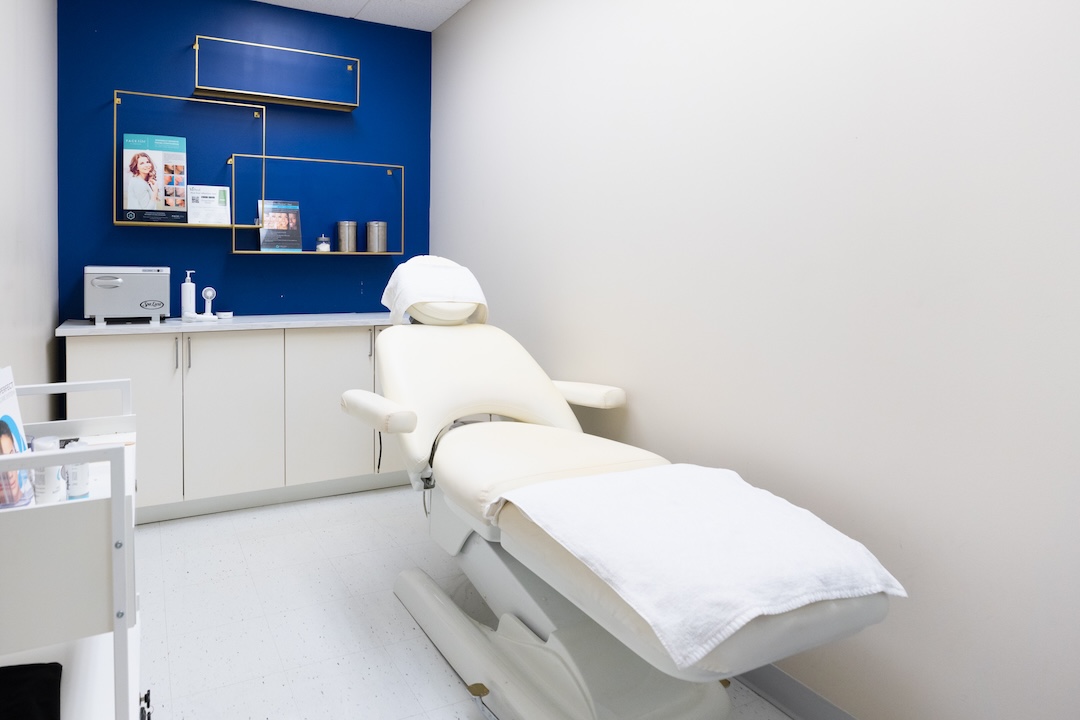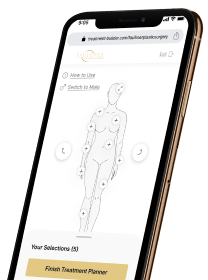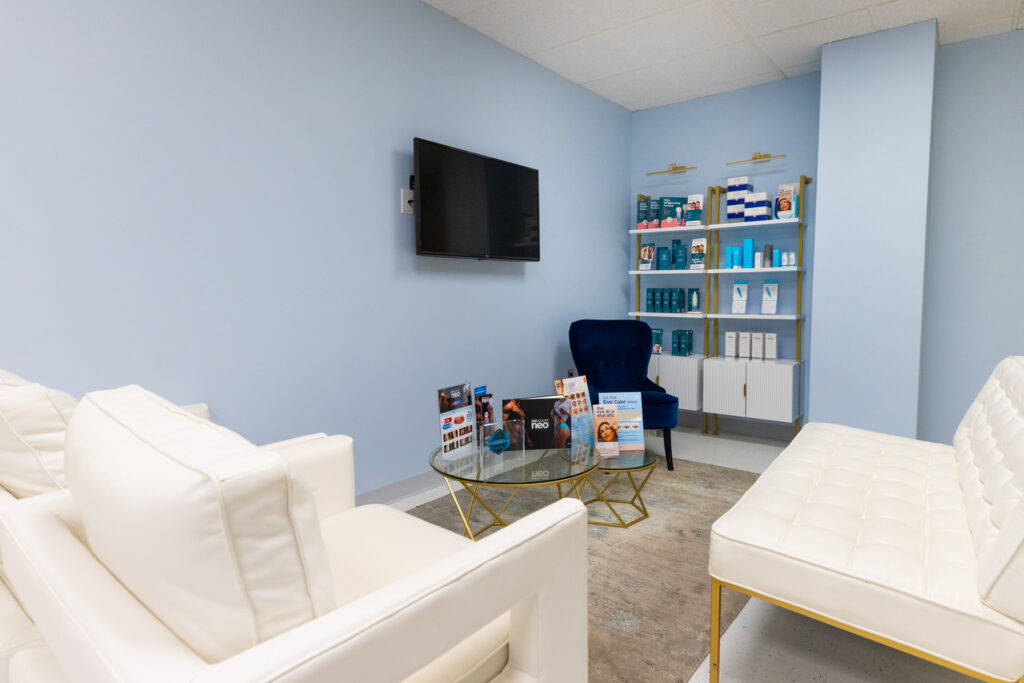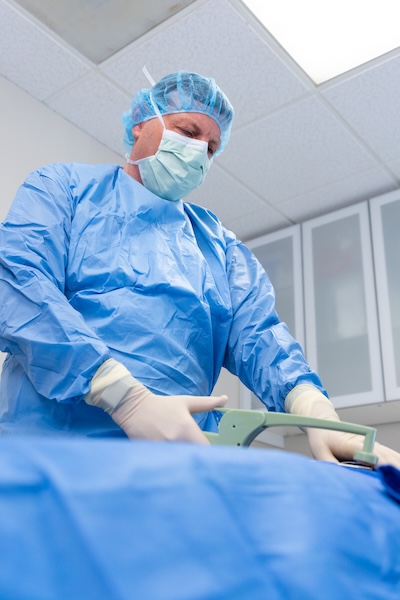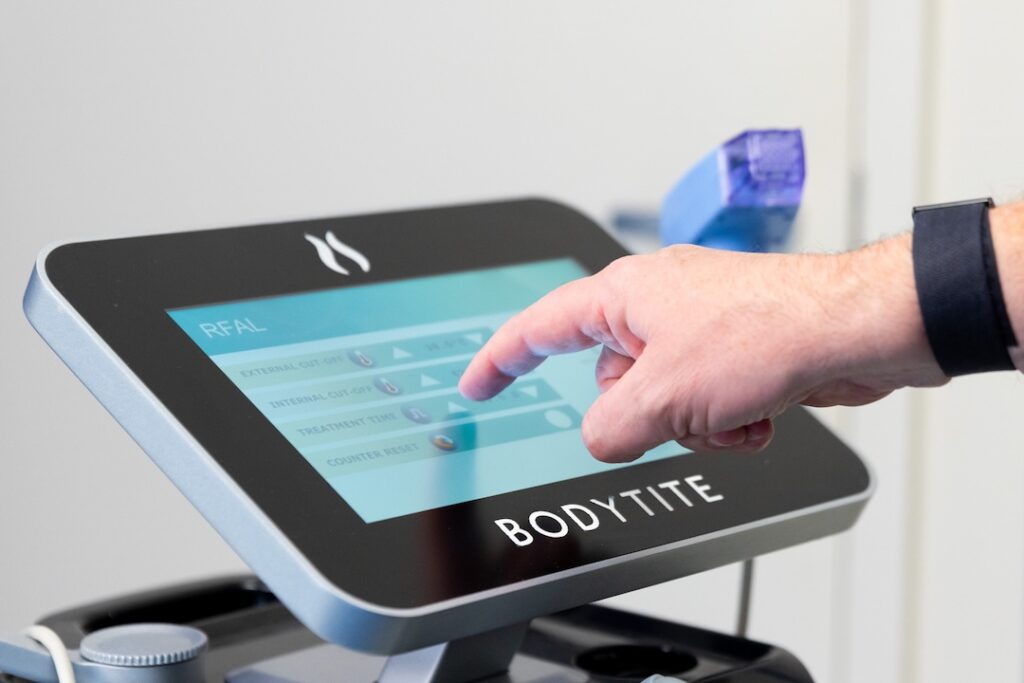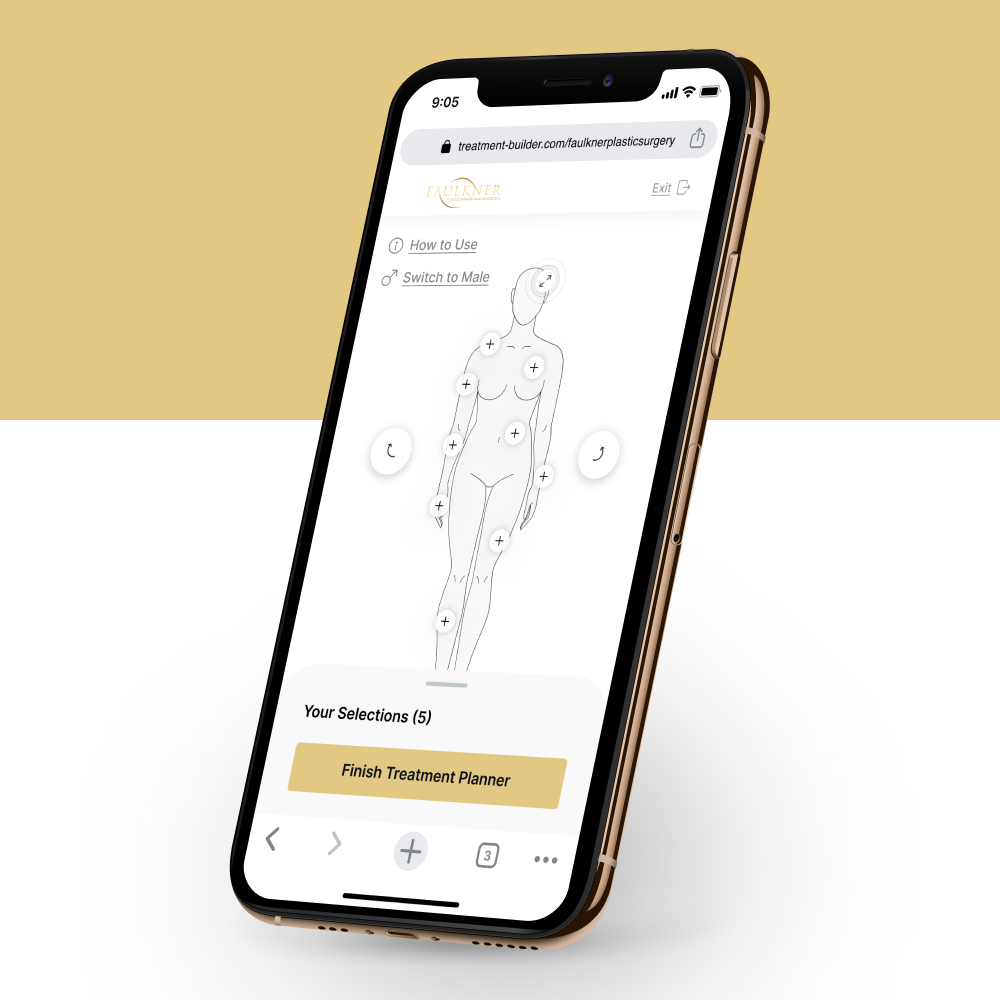Yes, a butt lift in Rockville at Faulkner Plastic Surgery & Aesthetics begins with a consultation. During this appointment, Dr. Faulkner reviews your aesthetic goals, medical history, and treatment options. This is also an opportunity to ask questions, discuss concerns, and ensure the procedure aligns with your desired outcome.
About Butt & Thigh Lift
Dr. Faulkner approaches every thigh and butt lift in Rockville with your goals in mind, removing excess skin and fat from the thighs and buttocks while contouring the underlying muscles.
-
Excess skin
-
Excess or stubborn fat
-
Poorly defined contours
-
Chafing of the inner thighs
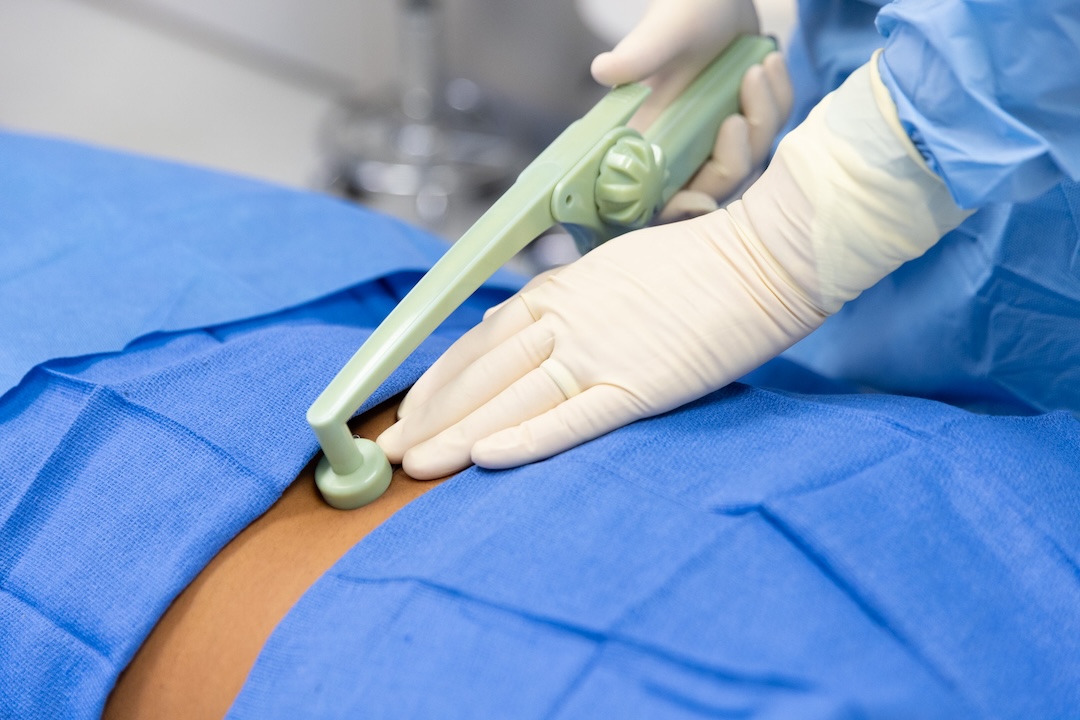
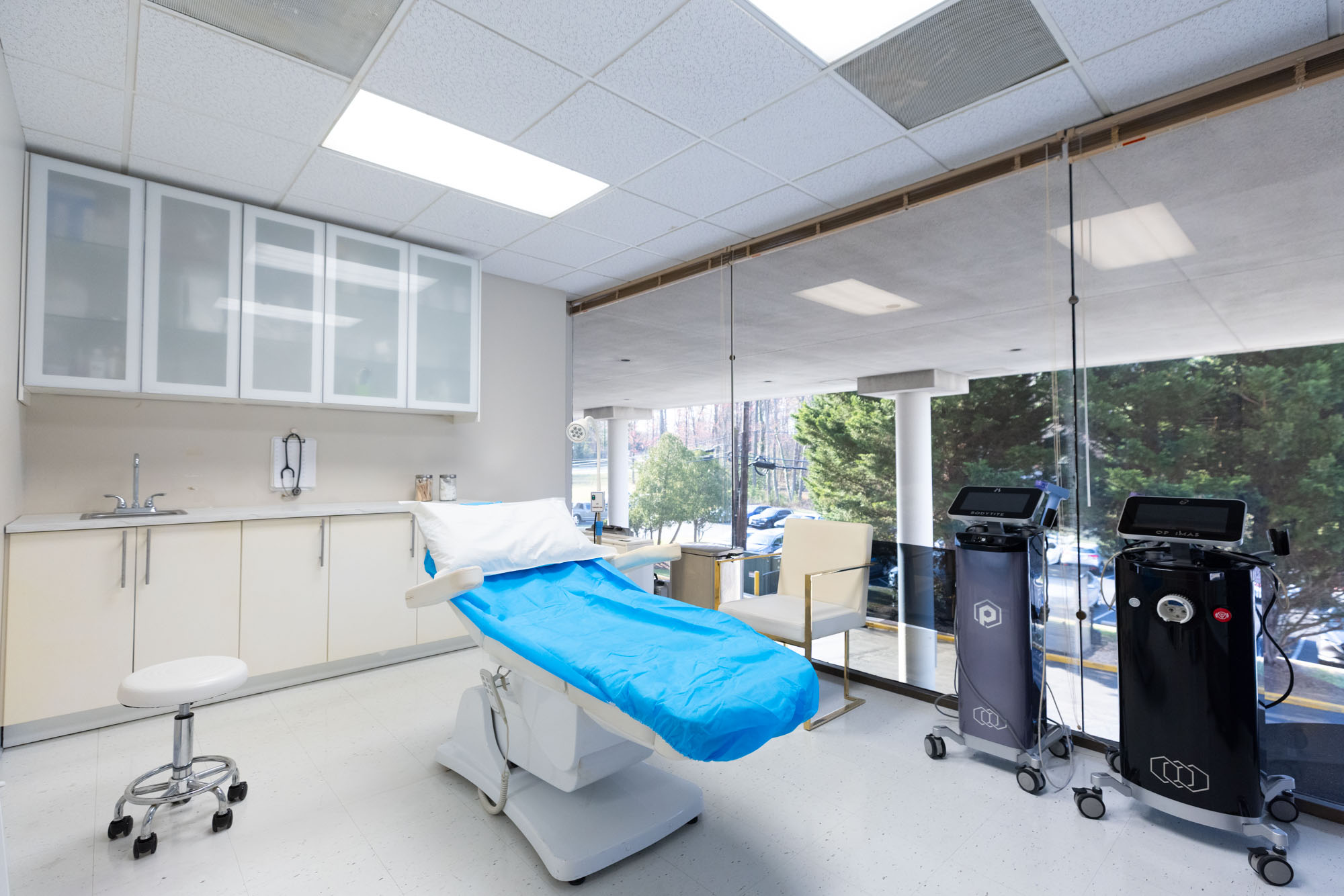
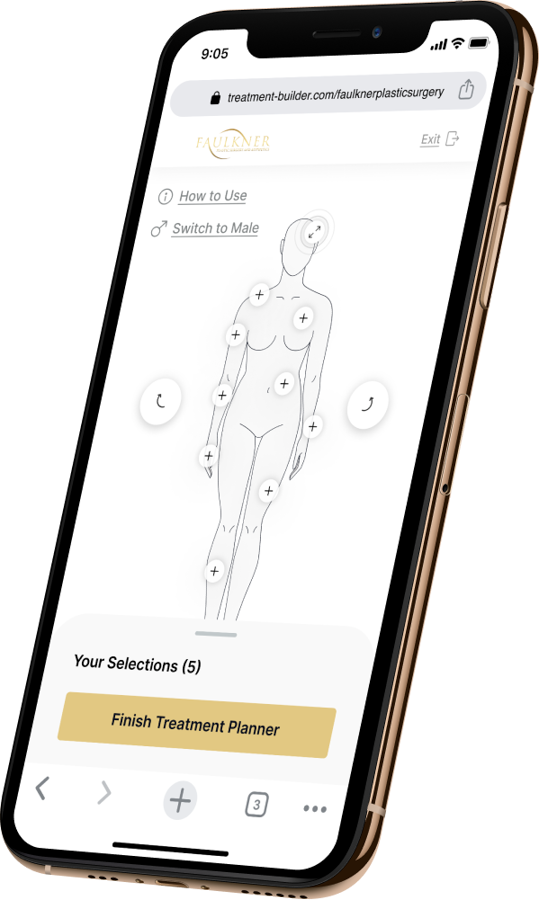
Discover the Possibilities
There is a world of treatment options available to you when you choose Faulkner Plastic Surgery & Aesthetics. Use our Treatment Planning Tool to see for yourself.
Are you a candidate for a thigh or butt lift?
This procedure is often sought after significant weight loss, aging, or genetic factors that contribute to sagging skin, excess fat, or a lack of muscle tone in the thighs and buttocks.
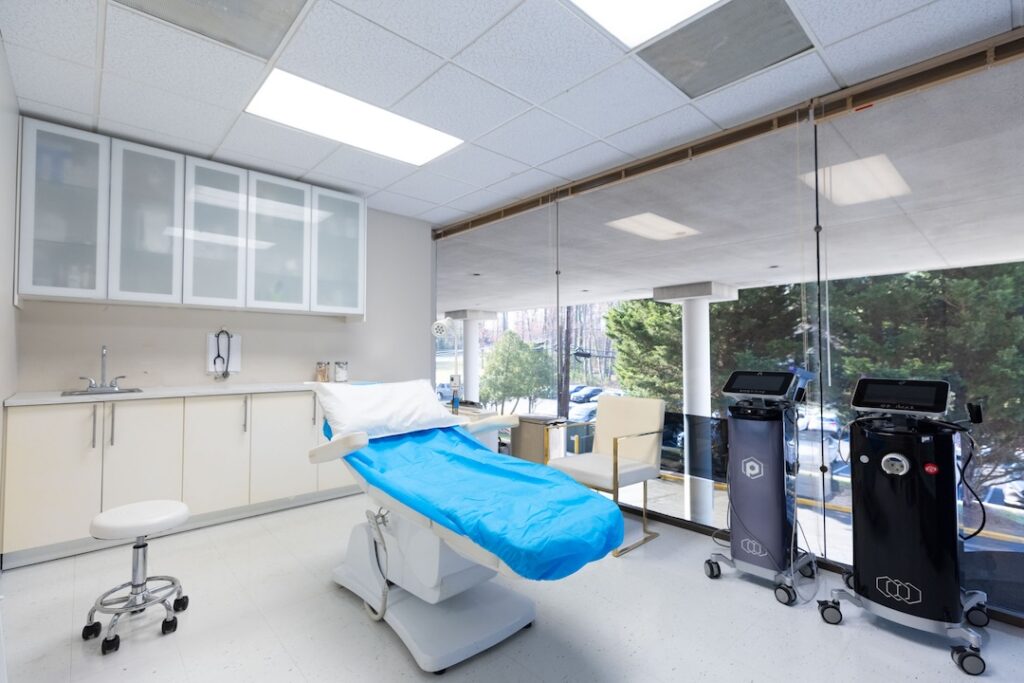
The Ideal Candidate
Dr. Faulkner may recommend a thigh or butt lift in Rockville if you:
- Have Experienced Significant Weight Loss: Individuals who have lost a large amount of weight (through diet, exercise, or bariatric surgery) often seek a butt and thigh lift to remove excess skin and fat that has not tightened or regained elasticity after the weight loss.
- Have Loose or Sagging Skin: As we age, skin loses its natural elasticity, and some people develop sagging skin on their thighs or buttocks. A butt and thigh lift can help tighten and firm up these areas.
- Desire for a More Contoured Appearance: Those who are generally in good health and desire a more sculpted, toned lower body may benefit from this procedure. The lift can improve the contours of the thighs and buttocks and create a more youthful and lifted appearance.
Whether performed individually or as part of a lower body lift, the surgery can provide long-lasting results that significantly enhance both appearance and confidence. As with any surgery, it’s essential to have a thorough consultation with Dr. Faulkner, a board-certified plastic surgeon, to ensure you’re a good candidate and understand the risks, benefits, and recovery process.
Potential Risks of Butt & Thigh Lift Surgery
As with any surgery, there are risks and potential complications. Some of these include:
- Infection: As with any surgical procedure, there is a risk of infection at the incision sites.
- Bleeding or Hematoma: Some bleeding is normal, but excessive bleeding or fluid accumulation (hematoma or seroma) can occur.
- Scarring: Scarring is inevitable, but Dr. Faulkner will make efforts to minimize scars and place incisions in discreet areas.
- Changes in Sensation: Temporary numbness or changes in sensation may occur in the thighs, buttocks, or surrounding areas after surgery.
- Blood Clots: Deep vein thrombosis (DVT) is a potential risk after surgery, especially for patients who are immobile for an extended period.
- Poor Healing: In some cases, poor healing or wound complications can occur, especially if the patient doesn’t follow post-operative care instructions.
Pre & Post Care Instructions
Consultation & Evaluation
- Initial Consultation: You will start with a consultation with Dr. Faulkner, a board-certified plastic surgeon, to discuss your goals, medical history, and suitability for the surgery. Dr. Faulkner will evaluate your skin elasticity, body shape, and the areas that need attention.
- Medical History: Inform Dr. Faulkner about any pre-existing health conditions, allergies, medications, or if you have a history of blood clots or other medical issues. This is critical to ensure a safe procedure and recovery.
Stop Smoking
- Quit smoking: Smoking impairs circulation, delays healing, and increases the risk of complications. You will be asked to stop smoking at least 6 weeks before and after surgery to optimize healing.
Discontinue Certain Medications & Supplements
- Avoid blood thinners: Stop taking medications such as aspirin, ibuprofen, and certain herbal supplements (like vitamin E, garlic, or ginseng) at least 7 to 10 days before surgery, as these can increase the risk of bleeding.
- Consult Dr. Faulkner: Follow Dr. Faulkner’s advice regarding which medications to continue or stop before surgery.
Fasting Before Surgery
- You will need to fast for 8 to 12 hours before the procedure. This means no food or drink, including water, to avoid complications during anesthesia.
Prepare Your Home
- Plan for post-surgery care: Arrange for a friend or family member to drive you home after the surgery. Set up a comfortable place for rest with necessary items like pillows, medications, and easy-to-prepare meals.
- Wear loose clothing: On the day of the surgery, wear loose, comfortable clothing that won’t rub or irritate the treated areas.
Shower and Clean the Skin
- Antibacterial wash: Shower using an antibacterial soap the night before surgery to reduce the risk of infection. Avoid lotions, perfumes, or deodorants on the day of the surgery.
Rest and Recovery
- Get plenty of rest: Resting is essential for the healing process. You may experience some pain, swelling, and bruising after surgery, which is normal. Follow Dr. Faulkner’s instructions for pain management.
- Pain management: Take the prescribed pain medications as directed. Over-the-counter pain relievers may also be recommended, depending on the severity of discomfort.
- Elevation: For the first few days, elevate your legs and buttocks when resting to reduce swelling. However, avoid sitting directly on your buttocks for several weeks.
Compression Garments
- Wear compression garments: Dr. Faulkner will likely provide you with compression garments to wear on your thighs and buttocks for 4 to 6 weeks. These garments help reduce swelling, support the healing tissue, and improve skin contour.
- Only remove when instructed: You will be told when it is appropriate to remove the compression garment, typically only for bathing or cleaning.
Swelling and Bruising
- Swelling is normal: Expect swelling and bruising, which may persist for several weeks. Ice packs can help reduce swelling and provide relief, but make sure to place them on a cloth or towel, not directly on the skin.
- Gradual improvement: The majority of the swelling should subside in 4 to 6 weeks, but some mild swelling may last up to 3 months.
Incision Care and Hygiene
- Keep incisions clean and dry: Follow the specific instructions from Dr. Faulkner for cleaning your incisions. Generally, you’ll be advised to gently clean the area with mild soap and water and avoid scrubbing the surgical sites.
- Avoid soaking in water: Do not submerge the incisions in water (e.g., baths, hot tubs, swimming pools) until Dr. Faulkner clears you to do so, usually after 4 to 6 weeks.
Activity Restrictions
- Avoid strenuous activity: You should avoid any heavy lifting, vigorous exercise, or strenuous movements for at least 6 weeks after surgery to allow the healing process to progress properly.
- Return to light activity: Walking and light daily activities can often be resumed within a few days to a week, but avoid sitting on your buttocks for prolonged periods in the first few weeks.
- Limit sitting on your buttocks: For the first few weeks, avoid sitting directly on your buttocks to prevent pressure on the healing tissue. You may be given a special cushion to help when sitting is necessary.
Follow-Up Appointments
- Attend follow-up visits: You’ll have several follow-up appointments with Dr. Faulkner to monitor the healing process, remove stitches (if necessary), and check for any complications. The first follow-up typically happens within 1 to 2 weeks after surgery.
- Contact Dr. Faulkner: If you experience unusual symptoms like excessive pain, infection signs, or complications, contact Dr. Faulkner right away.
Scar Care
- Scar management: The incisions will result in scars, but Dr. Faulkner will give you instructions for proper scar care. He may recommend silicone gels or sheets, which we have available in our office, to help reduce scarring.
- Avoid sun exposure: Protect your scars from direct sunlight for at least 6 to 12 months after surgery to prevent hyperpigmentation and further scarring. Always apply sunscreen when exposed to the sun.
Signs of Complications
- Watch for infection: If you notice increased redness, warmth, or drainage from the incisions, it could be a sign of infection. Other infection signs include fever, chills, or increased pain.
- Fluid accumulation: Some fluid buildup (seroma) under the skin can occur after surgery. If you notice any unusual bulging, contact Dr. Faulkner.
- Blood clots: Symptoms of blood clots may include swelling, redness, pain in your legs, or shortness of breath. Seek immediate medical attention if you experience these symptoms.
Long-Term Care & Results
- Maintain a stable weight: Once the healing process is complete, maintaining a stable weight is crucial for preserving the results of the surgery.
- Healthy lifestyle: A balanced diet and regular exercise will help sustain the appearance of your thighs and buttocks after surgery.
- Final results: It may take 3 to 6 months for the swelling to fully subside and for the final results to be visible. Over time, you will see the improvements in contour and firmness.
A thigh and butt lift in Rockville can significantly improve the contours of your lower body, but following the pre- and post-care instructions is crucial to achieving optimal results and minimizing the risk of complications. Make sure to follow Dr. Faulkner’s advice, rest appropriately, and attend all follow-up appointments. A successful recovery will lead to smoother, firmer thighs and buttocks and can greatly enhance your confidence and body image.
Frequently Asked Questions
A butt lift in Rockville can remove excess skin and fat from the thighs and buttocks, creating smoother, more sculpted contours. Dr. Faulkner tailors each procedure to restore proportion and symmetry, helping patients achieve a balanced, contoured lower body.
This procedure also improves comfort and mobility by reducing chafing and skin irritation caused by excess tissue. In just 4 hours, a butt and thigh lift can deliver long-lasting, transformative results.
Patients can achieve many benefits from a butt and thigh lift, including:
- Improved Contours: The surgery removes excess skin and fat, creating smoother, firmer contours for the thighs and buttocks.
- Youthful Appearance: Tightening and lifting the skin in these areas can provide a more youthful and lifted look.
- Boosted Confidence: Many patients report an improvement in their self-esteem and body confidence after a butt and thigh lift, especially if they were self-conscious about sagging skin or excess fat.
- Long-Lasting Results: With a stable weight and healthy lifestyle, the results of a butt and thigh lift can be permanent, offering lasting improvement in the shape and tone of the lower body.
Dr. Faulkner uses a range of techniques to perform a thigh or butt lift in Rockville, including:
- Thigh Lift:
- A thigh lift focuses on the inner thigh. Dr. Faulkner removes excess skin and fat and tightens the remaining tissue. This procedure can also involve liposuction to contour the area.
- The incision is typically made along the inner thigh or along the groin area, depending on the amount of skin to be removed and the desired results.
- Butt Lift:
- A butt lift can involve lifting the buttocks to improve their shape and firmness. It may also be combined with liposuction or fat grafting (where fat is harvested from another area of the body and injected into the buttocks to add volume).
- In some cases, excess skin is removed, and the remaining tissue is tightened to achieve a more youthful appearance.
- Lower Body Lift:
- A lower body lift typically targets the abdomen, hips, and flanks. This is a more extensive surgery typically performed after significant weight loss, such as following bariatric surgery.
- The incision is typically made around the waistline or in an “L” or “T” shape to remove excess skin and provide comprehensive lifting to the entire lower body.
When you visit Dr. Faulkner for a thigh and butt lift in Rockville, you can expect:
- Anesthesia: The procedure is typically performed under general anesthesia, meaning you will be asleep throughout the surgery.
- Incision Placement: The incisions are carefully planned to be discreet and as inconspicuous as possible. For a thigh lift, the incisions are often placed on the inner thigh or along the groin. For a butt lift, the incisions may be made across the lower back or in the natural folds of the body. In the case of a lower body lift, the incisions might extend around the waistline or in a “belt-like” pattern to address multiple areas.
- Fat Removal & Skin Tightening: Excess fat is typically removed using liposuction to contour the thighs and buttocks. Afterward, excess skin is removed, and the remaining tissue is tightened to improve the overall shape and contour. If necessary, the buttocks can be lifted and reshaped to restore a youthful shape and position.
- Closing Incisions: The incisions are closed with sutures, and drainage tubes may be placed temporarily to help remove any excess fluid or blood.
Initial results appear right away, though swelling takes several months to fully resolve. Maintaining a stable weight and active lifestyle helps preserve long-term results.

